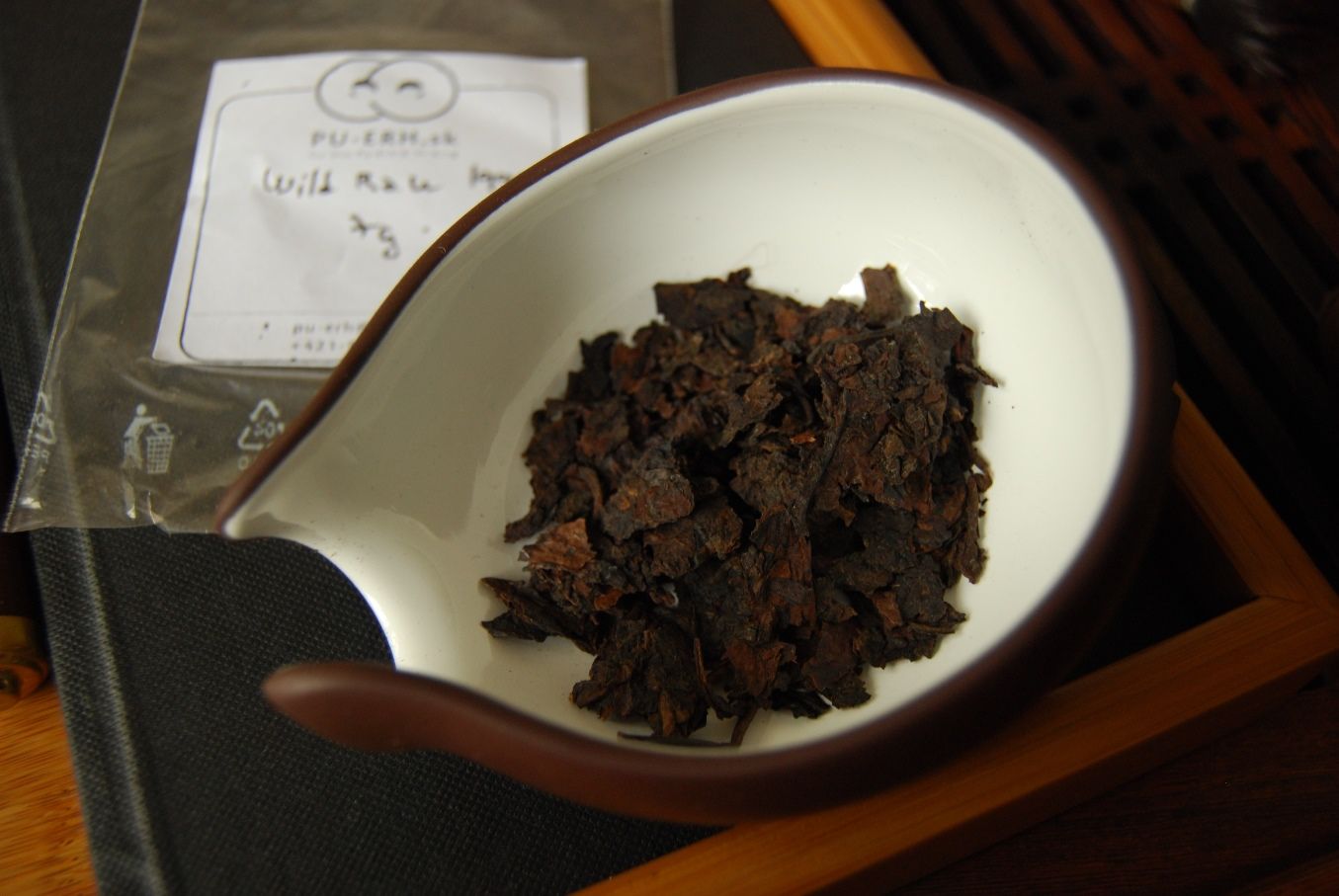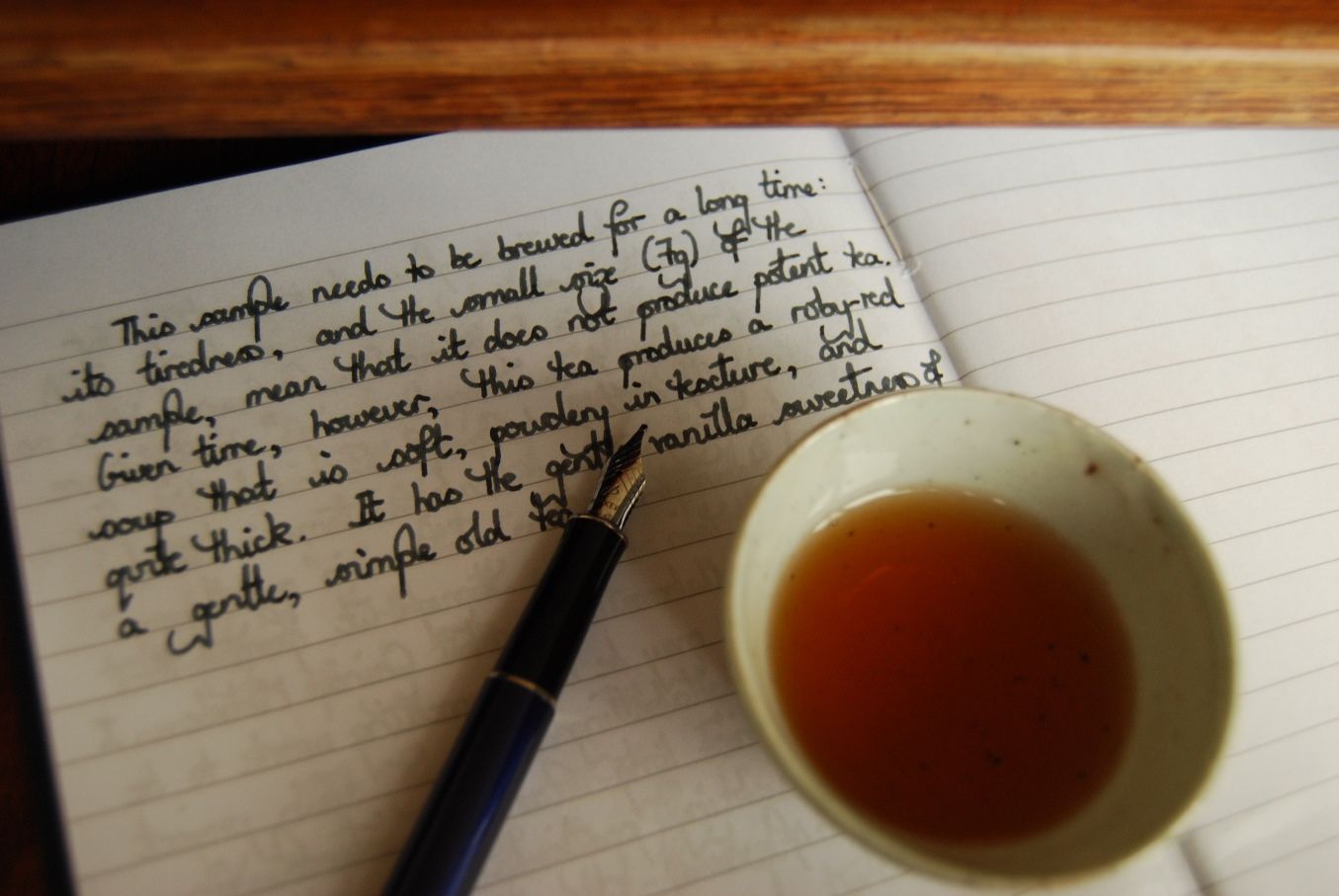The 1990 Zhongcha "Wild Raw" may be a literal character-for-character translation of "yesheng", which actually just means "wild-grown". The leaves, shown above, are dusty and orange, in the "very knackered" style of old zhuancha [brick tea]. This is also suggested by the large number of huangpian [yellow flakes], which are normally not present in bingcha but which appear in zhuancha. Amusingly, the huangpian look more like red flakes.
This is a friendly, warm, and comforting old tea. It tastes old, with its smooth, edgeless profile, and it tastes sweet, with the vanilla of old bookcases, if such a thing exists. The "knackered" feeling exerts itself again as we notice that it takes a good few infusions to reach full speed. I am happy to be kind to this old tea, and to give it the extended duration in the teapot that it requires in order to deliver a full brew. I am in no hurry, and this charming old fellow is very appealing.
This isn't the sort of cake that should attract a high price - it was probably exceedingly inexpensive when young. It is not for sale, however, and perhaps that is for the best. I can instead concentrate on the warming feeling it has placed in my belly, and in the fluffy, fully texture in the mouth. There is no real huigan, but it would be churlish to demand one of such a tired, comforting tea.
I am always impressed by the wide range of experiences that one may have at the tea-table.




Hello Hobbs, thx for your review, it made me to retaste this 'colourful' tea, its retail price in China mainland is around 900 RMB/300 grams. I got these few notes from my supplier in Taiwan with it.
ReplyDelete1. Material:This tea’s production methods is Zhong Cha Gong Si ‘s original methods for the materials is not choose the level range but focus on fertile and rich branches and leaves.
2. Store environment: City in Taiwan, because this tea transformed good when we got, so we no need to store in mountain district.
3. The color of tea is near the color of amber which represents the stored year is long enough. The taste is rich and variable.
Dear Ezorro,
ReplyDeleteThank you very much for the additional details! Does this make it Zhongcha, or is it just that they used a similar processing?
With best wishes,
Hobbes
Hello Hobbs, they say that this tea was bought when the Zhong Cha Gong Si turned into the privatization, so if you meant if this was produced by the ZhongCha factory, then, yes, it was. I am not that much familiar with the history of those main pu factories.
ReplyDeleteHow interesting - I'll update my article and links to it. Thanks again!
ReplyDeleteToodlepip,
Hobbes